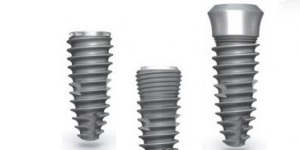
طرح پروتز ثابت
2015-09-02
Template from Stone Model
2015-09-02Accurate placement of any implant requires the awareness of its intended prosthetic restoration. Mounted study casts and a diagnostic wax-up of the teeth to be replaced are usually necessary for the fabrication of a surgical template that will aid the dentist in the appropriate placement of multiple implants. Although the location and availability of bone will dictate the ultimate trajectory of the pilot drill, clinicians should strive to stay within the center of the intended tooth and within 10˚ of the trajectory of the intended prosthesis.
Vacuum-Formed Template
After making an impression and subsequent cast of the diagnostic wax-up of the intended restoration, a vacuum-formed template is prepared on the cast from thin template stock which is commonly used for the chairside fabrication of transitional restorations. A hole is drilled in the middle of the incisal or occlusal surface of the template in the location of the intended tooth. The vacuum-formed template, if possible, is trimmed to include at least one tooth distal and three or four teeth mesial to the area of the intended replacement.






